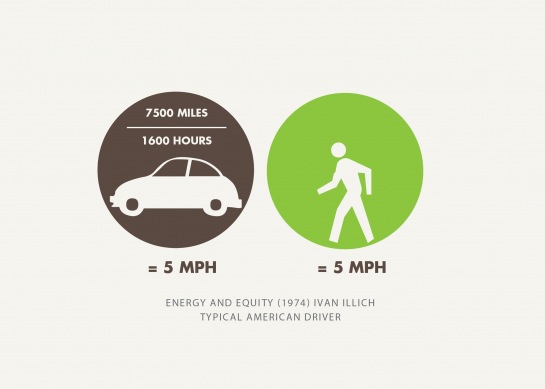Also discussed here: Addicted to speed? Slow down, save time and be wealthy (gehlblog-making cities for people, Jul. 17, 2012)
Today we review an article by an Australian, Prof. Tanter, who examines all the extra costs involved in driving cars quickly – and the savings that could be achieved by switching to “slower” models of travel – even though, as he points out, one saves time (and money) by using them.

Key Quotes:
“the time we spend at work earning the money to pay for all our transport costs. For pedestrians, this time is virtually nil. For cyclists it is minimal. For car drivers, the time spent earning the money to pay for all the costs of cars is usually much greater than the time spent driving”
“When we drive faster to save time, the few seconds we save will cost us much more than that in the time needed to pay for the extra fuel, wear and tear on the car, and stress on ourselves”
“The emphasis in urban areas on increasing the speed and volume of car traffic contributes to ill-health through its impacts on local air pollution, greenhouse gas production, inactivity, obesity and social isolation”
“the risk of pedestrian death in crashes rises from 5% at 20 mph to 45% at 30 mph and 85% at 40 mph”
“On highways, cars travelling at 60 mph will produce far less CO2 than if travelling at 70 mph (between 10% and 20% less”
“Slow Cities encourage the use of local materials and foods, reducing the need for transport of goods and materials, particularly by trucks. The emphasis is on making places for people rather than for cars”
“One way to achieve a change in urban transport is to reprioritise whose time is valued in cost-benefit analyses. Improving levels of urban health might be as simple as valuing the time of pedestrians, public transport users and cyclists more than the time of motorists”







No comments:
Post a Comment